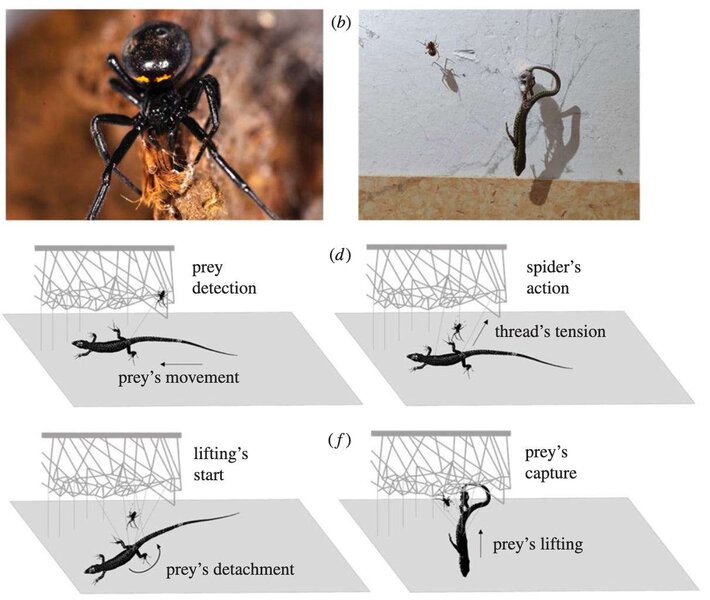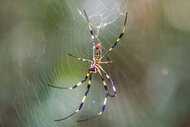Create a free profile to get unlimited access to exclusive videos, sweepstakes, and more!
Heave Ho! Little tangle-web spiders perform heroic heavy-hoisting by spinning elaborate pulleys

We always knew Spider-Man's superhuman strength originated from the bite of a radioactive arachnid, but now researchers are investigating how tangle-web spiders employ some seriously uncanny engineering feats to hoist heavy prey more than 50 times their weight with silken threads.
In a new research paper published last week in the online scientific forum Journal of the Royal Society Interface, Italian scientists Gabriele Greco and Nicola M. Pugno at Italy's University of Trento have unveiled some of the secrets behind these eight-legged wonders' amazing abilities to lift larger lizards and small mammals using pre-stretched silk strands as a capable system of pulleys.
The methods employed by this group of clever tangle-web spiders, of which there are 2,200 catalogued species, are ingenious. Also called cobweb weavers and belonging to the family Theridiidae, they exist around the globe and are notable for their intricate, unconventionally-shaped webs.
According to their findings, Greco and Pugno discovered that these spiders attached a network of pre-stretched threads to their quarry, then constructed a complicated network of silks to draw its ensnared food deeper into its clutches. Check out the itsy-bitsy spider in action in the video below!
For their investigation, Greco and Pugno studied five different spiders from two different species in the Theridiidae family — Steatoda paykulliana and Steatodatriangulosa — while posing the question of how tangle-web spiders employ the elastic properties in silk to do their heavy lifting tasks.
As you can see in the video, the industrious Steatoda spider attempts to capture a big juicy roach to devour for dinner. By attaching one silk strand after another to the squirming bug, the spider is able to support the full load of the doomed roach’s weight. Through the application of shorter and shorter strands, the arachnid is able to manipulate the insect to the center of its irregular web.
This particular mechanism is not used for smaller prey like flies or ants, which are simply pulled up via gumfoot threads with attached globs of glue-like material and the springy elastic energy stored within them.
"If the unlucky victim is a small insect, that one thread may be enough to lift it up," said lead study author Greco, a researcher with the University of Trento's Laboratory of Bio-inspired, Bionic, Nano, MetaMaterials Mechanics. "But if the prey is too big for the spider to yank up using the power of its own legs, this is when the trap changes. The spider is getting involved, too."
Once hypertension threads are produced by the hungry creature, it anchors one end of the stretchy fibers to its messy web and the opposite end to the struggling prey. As the threads loosen and relax, they release their stored energy to systematically raise the captive creature's weight until it reaches the proper height.
"The spider is a perfect factory of silk, it produces multifunctional materials in less than milliseconds — at least five different materials," Greco added. "These were just the first insights in this direction."
Questions still remain as to the upper-end limits of the tangle-web spiders' impressively strung silks. Further research is necessary in order to calculate the strands' undeniable powers of tension and compression, as wiggling animals test their ultimate strength without them breaking and allowing narrow escape.
















